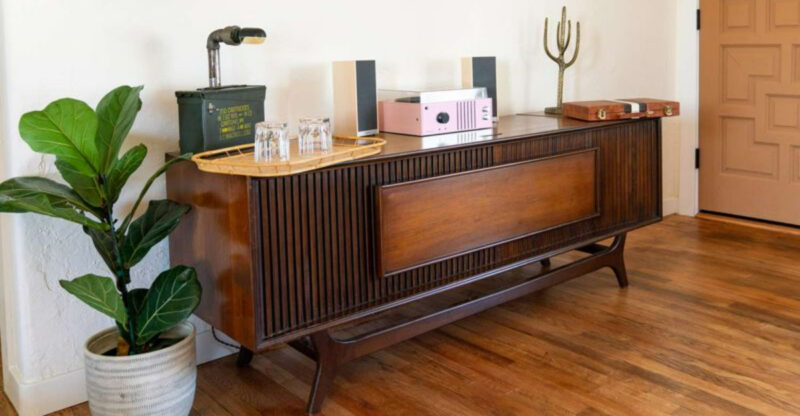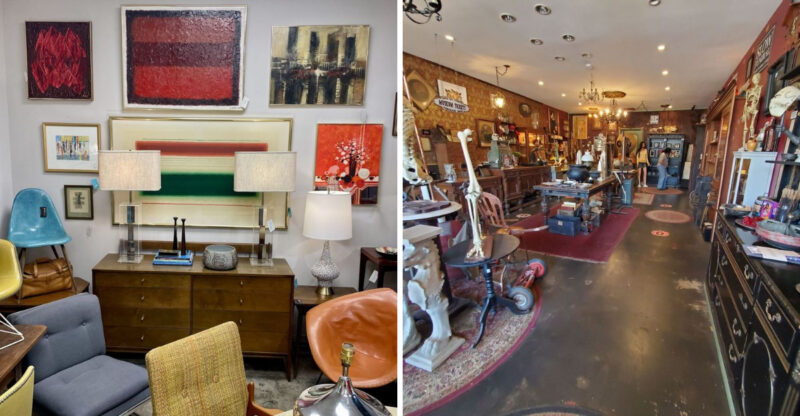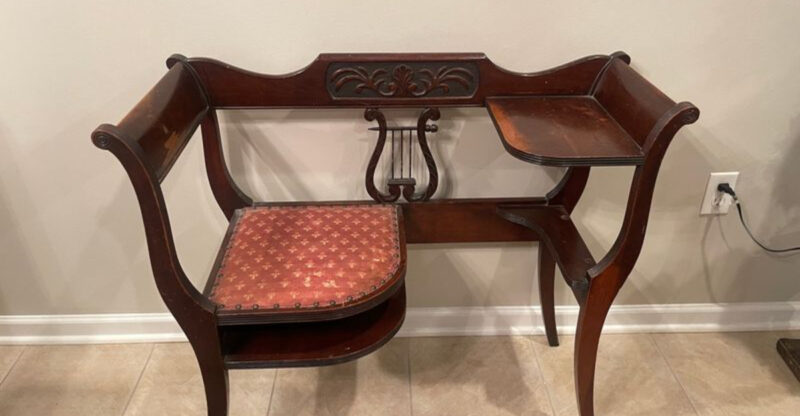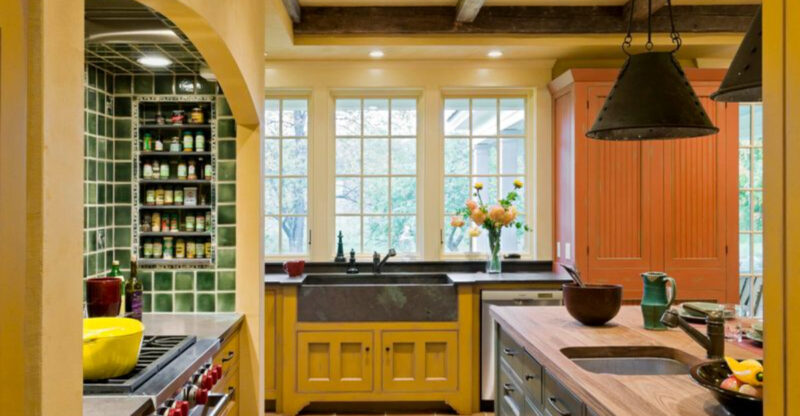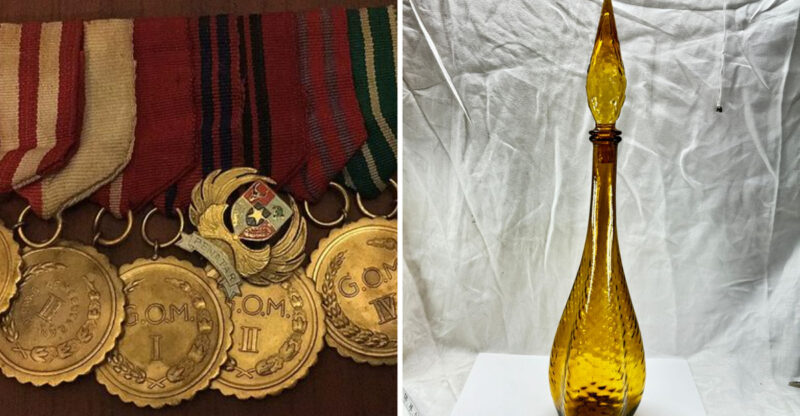Learn Which 16 Collectibles Michigan Designers See Slipping And 5 That Have No Market
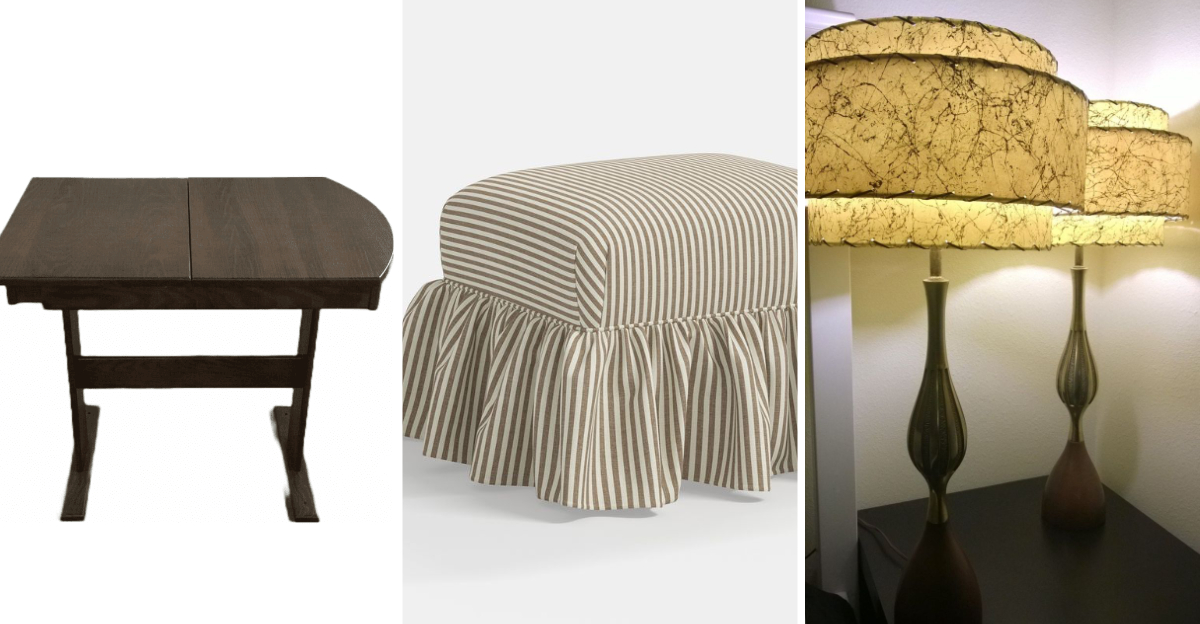
The world of home decor and collectibles constantly evolves, with yesterday’s treasures sometimes becoming today’s unwanted items.
Michigan interior designers have noticed significant shifts in what buyers value in the resale market. Some pieces that once commanded premium prices are now gathering dust, while others have completely lost their appeal.
Let’s explore which collectibles are losing steam and which ones you might as well not bother trying to sell.
1. Worn Velvet Armchairs Losing Their Luster
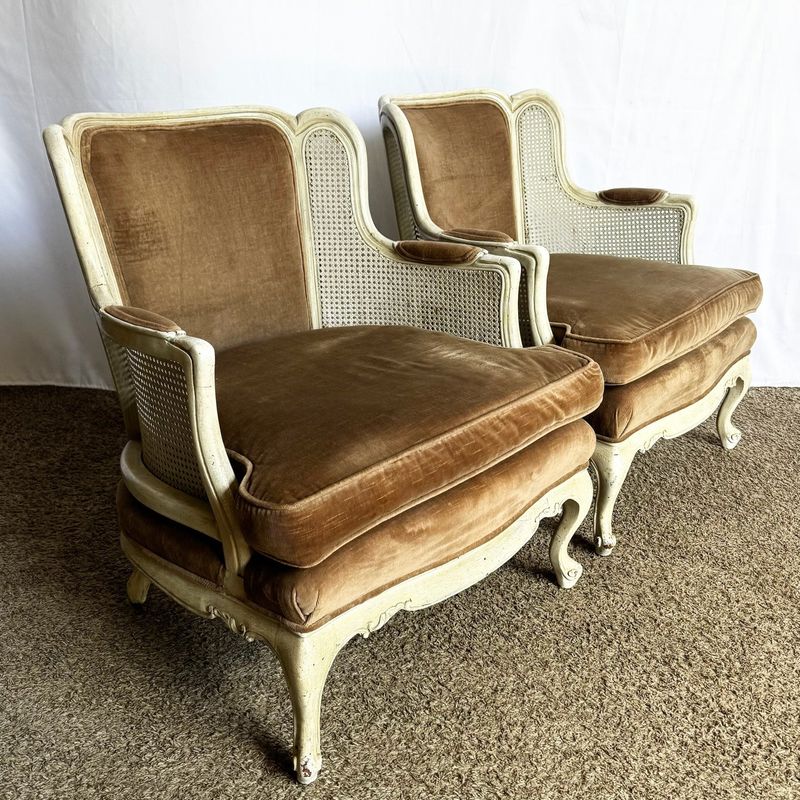
Once the crown jewel of vintage furniture finds, worn velvet armchairs have lost their appeal among Michigan’s design-savvy crowd. The shabby-chic movement that celebrated these pieces has waned significantly in recent years.
Designers point to maintenance issues as a major turnoff. Velvet upholstery shows wear patterns quickly, and older pieces often harbor dust mites and allergens that new homeowners prefer to avoid. Modern buyers are increasingly seeking performance fabrics that withstand pets and children.
If you’re holding onto Grandma’s velvet throne hoping for a big payday, you might be disappointed. Consider reupholstering in a contemporary fabric if the frame has good bones, or simply enjoy it yourself rather than counting on it as an investment piece.
2. Plastic Patio Furniture Sets Fading Fast
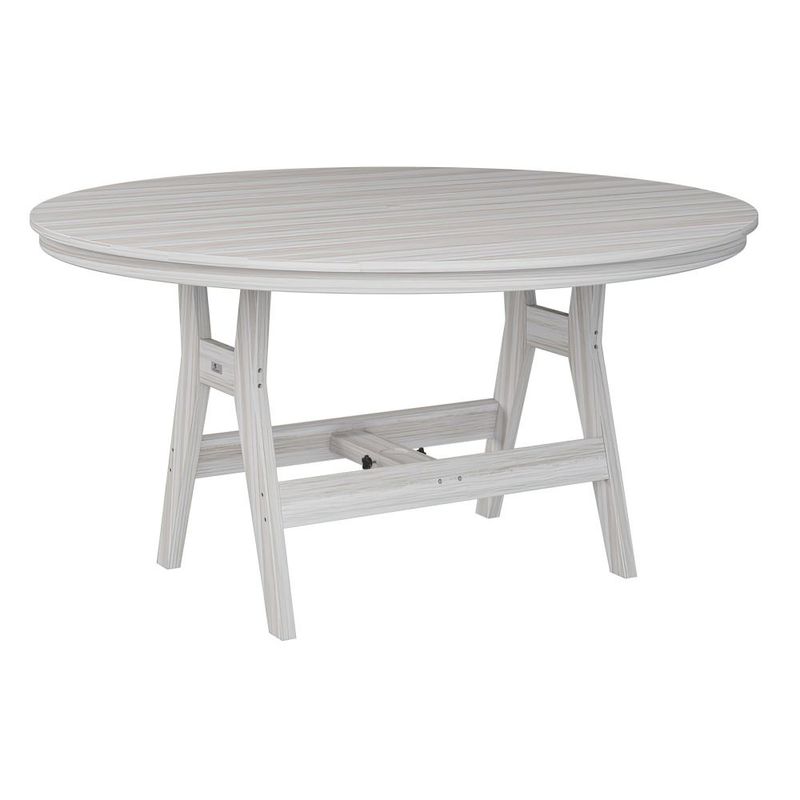
Remember those white plastic patio chairs and tables that populated countless backyards? Michigan designers report they’ve fallen completely out of favor with collectors and homeowners alike. Environmental concerns have significantly dampened enthusiasm for these petroleum-based products.
Yellowing plastic, brittle from UV exposure, holds little appeal in today’s market focused on sustainability. Even vintage examples from the 1960s-70s that once held retro charm have lost their collector base. Designers note that buyers now prefer natural materials like wood, metal, or newer eco-friendly composites.
The durability that once made these pieces attractive now works against them – they’re nearly impossible to dispose of responsibly, making them increasingly undesirable in environmentally conscious Michigan communities.
3. Faux-Marble End Tables Crumbling in Value
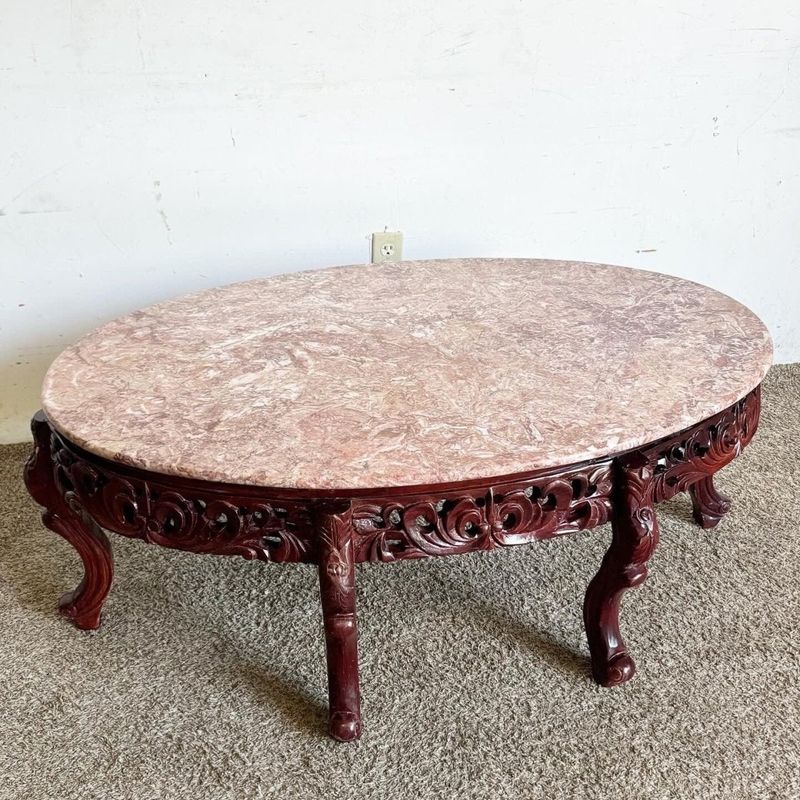
Those faux-marble end tables that once graced countless Michigan living rooms have hit rock bottom in the resale market. The artificial stone finish – typically just laminate over particleboard – doesn’t age gracefully and often bubbles or peels at the edges.
Michigan designers report clients specifically requesting these pieces be removed before home stagings. The heavy, dark appearance conflicts with today’s preference for lighter, airier spaces. Even genuine marble tables struggle in the current market unless they’re exceptionally high quality or have historical significance.
Have a house full of these once-popular tables? Consider upcycling them with paint or new tops rather than hoping to recoup your investment. The material’s association with dated 1980s and 1990s decor has permanently tarnished its appeal among collectors and homeowners alike.
4. Ornate Console Tables Falling From Grace
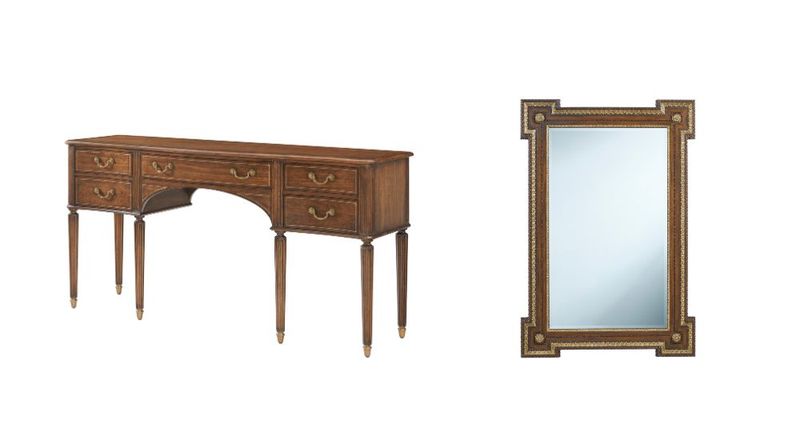
Heavy, ornate console tables with scrollwork, gilding, and intricate carvings are rapidly losing favor among Michigan collectors. These oversized statement pieces that once announced wealth and sophistication now signal outdated taste to younger buyers.
Designers across Detroit, Grand Rapids, and Ann Arbor report these pieces lingering in consignment shops for months, even when drastically reduced. The formal, maximalist aesthetic they represent clashes with contemporary Michigan homes emphasizing clean lines and multifunctional spaces. Their substantial size also works against them in smaller modern homes and apartments.
If you own one of these ornate beauties, consider reimagining it with matte paint in a contemporary color before trying to sell. Alternatively, remove some decorative elements for a cleaner look that might appeal to today’s minimalist-leaning market.
5. Rattan Magazine Racks Gathering Dust
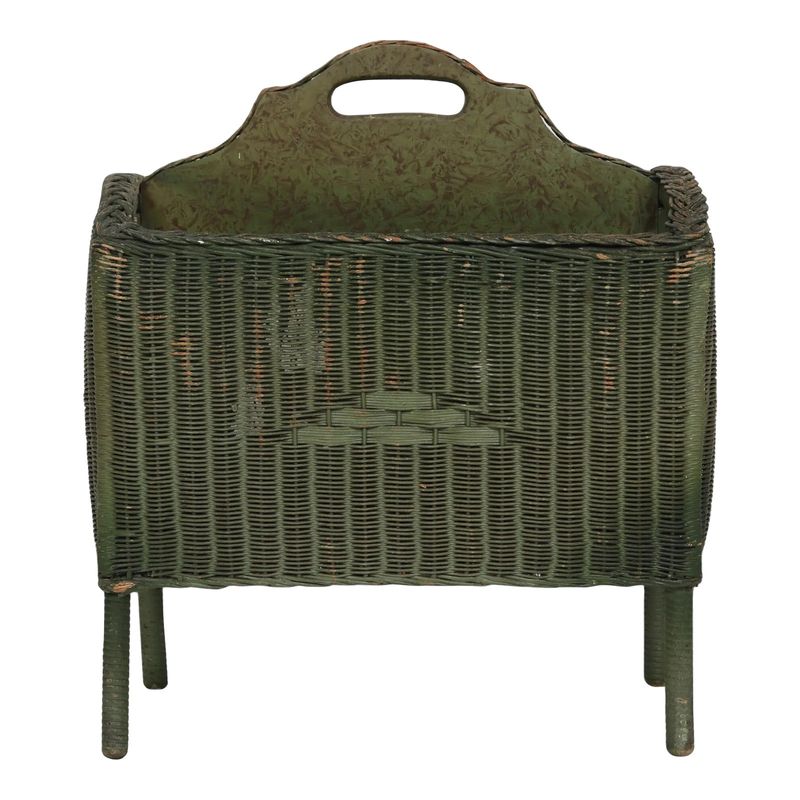
Those charming rattan magazine racks that once corralled periodicals in Michigan homes have become virtually worthless in today’s digital age. With magazines themselves becoming collectors’ items, the need for specialized storage has all but disappeared.
Michigan designers note these pieces frequently appear at estate sales with no takers, even at rock-bottom prices. The lightweight construction often hasn’t aged well, with brittle rattan splitting or unraveling after decades of use. Their specialized function also limits repurposing options in modern homes where multifunctional furniture is prized.
Already own one? Try repurposing it as a bathroom towel holder or plant stand before relegating it to the donation pile. The tropical or coastal associations of rattan remain somewhat appealing, but single-purpose furniture pieces continue losing ground regardless of material.
6. Bulk Buy Throw Pillow Sets Losing Appeal
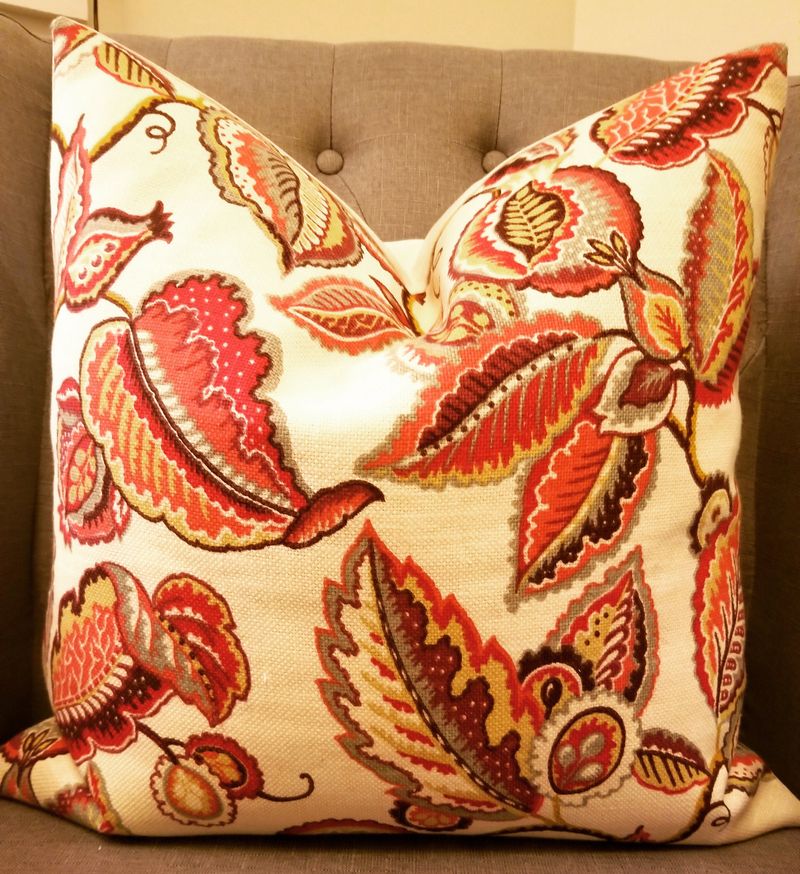
Those matching sets of throw pillows that came in packages of four or six are rapidly declining in resale value across Michigan. Interior designers consistently mention these as items clients are eager to replace rather than preserve or collect.
Mass-produced pillow sets with identical patterns lack the individuality today’s homeowners seek. Michigan’s design community emphasizes that contemporary styling favors curated, eclectic pillow arrangements that tell a personal story. The matchy-matchy aesthetic these sets represent reads as corporate and impersonal to younger buyers.
Already have these in your home? Consider selling them individually rather than as sets, or recover just a few in contemporary fabrics to mix with other pillows. The coordinated look these sets were designed to create has fallen decidedly out of favor with collectors and homeowners throughout the Great Lakes State.
7. Glass-Topped Etageres Shattering Expectations
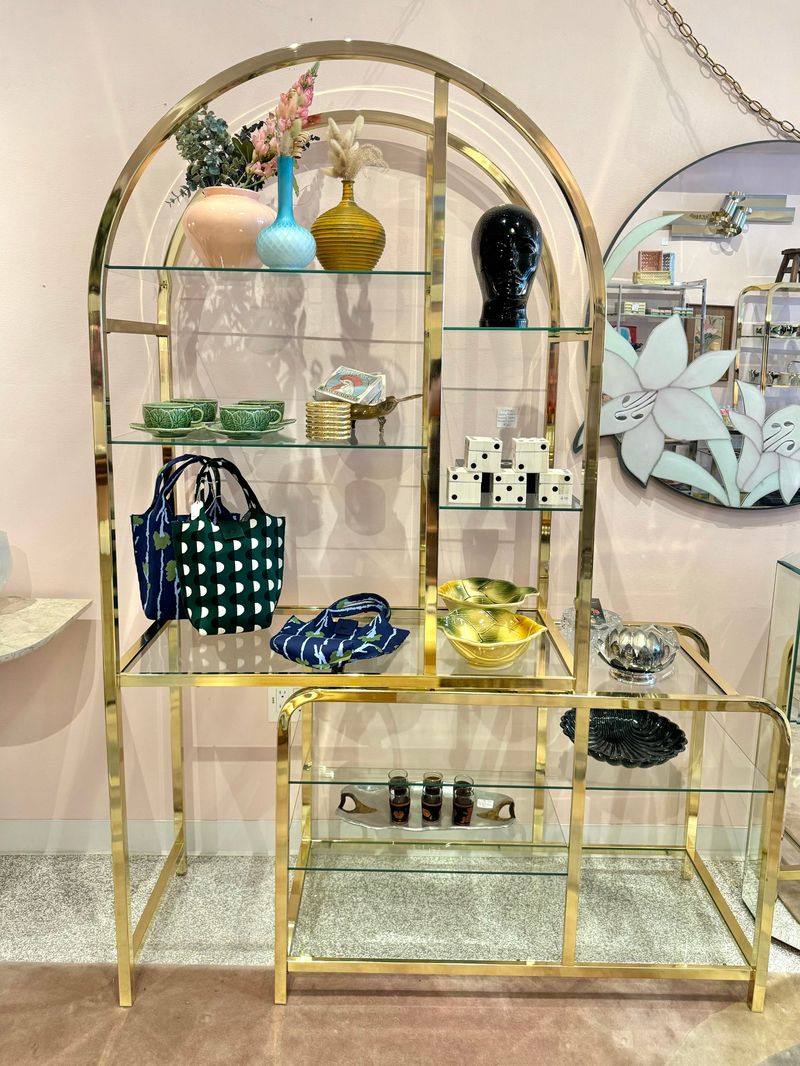
Those gleaming glass-topped etageres that once showcased collectibles in Michigan homes have tumbled dramatically in value. These multi-tiered display units with glass shelves symbolize a formal decorating era that feels increasingly irrelevant to contemporary buyers.
Michigan designers report these pieces languishing in resale shops, with brass and glass combinations from the 1970s and 80s particularly difficult to move. Their specialized display function feels outdated in homes where minimalism and functional storage take priority. Safety concerns also plague these pieces, with parents of young children actively avoiding glass furniture.
If you’re holding onto one, consider replacing the glass with wood shelving for a more current look before attempting resale. Alternatively, these pieces can find new life in bathrooms or as plant stands – functions where their open structure remains useful even as their formal display purpose has waned.
8. Matching Mirror-and-Console Pairs Reflecting Poorly
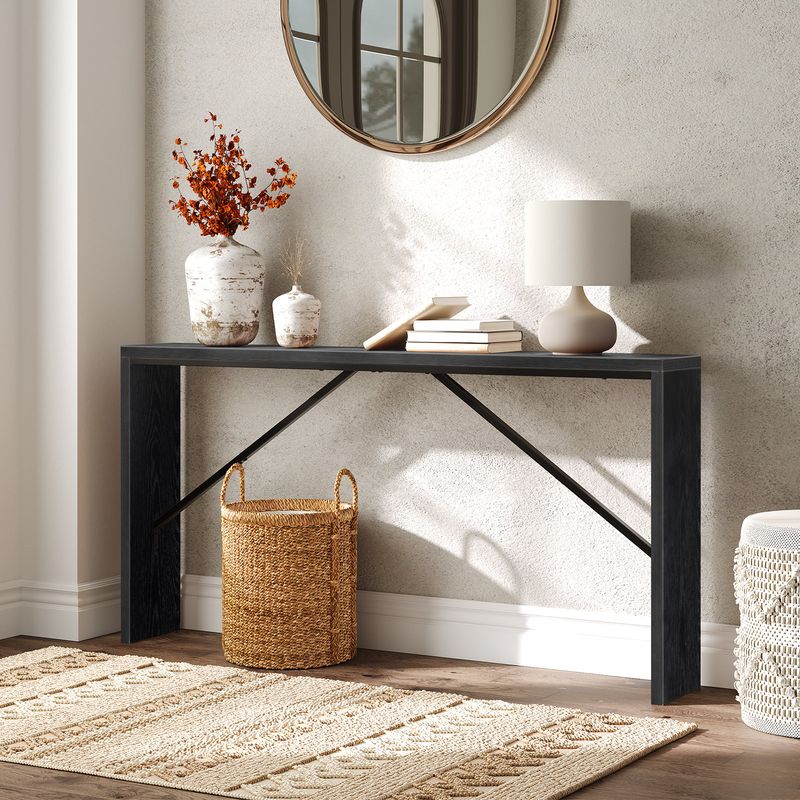
Those perfectly coordinated mirror-and-console combinations that once graced Michigan foyers are rapidly losing collector interest. Designers across the state report these matching sets appearing frequently at estate sales with few takers, regardless of condition or quality.
The matchy-matchy aesthetic these pairs represent feels formulaic and dated to contemporary Michigan homeowners. Today’s design sensibility favors more eclectic, collected-over-time combinations that showcase personal style rather than showroom coordination. Even high-quality examples struggle to find buyers unless they’re from recognized designers or have unique historical significance.
Already own a matching set? Consider separating the pieces, using them in different rooms to extend their useful life. Alternatively, painting one piece while leaving its partner in original condition creates the more dynamic relationship contemporary buyers seek when shopping for pre-owned furniture.
9. Brass Candleholder Sets Losing Their Shine
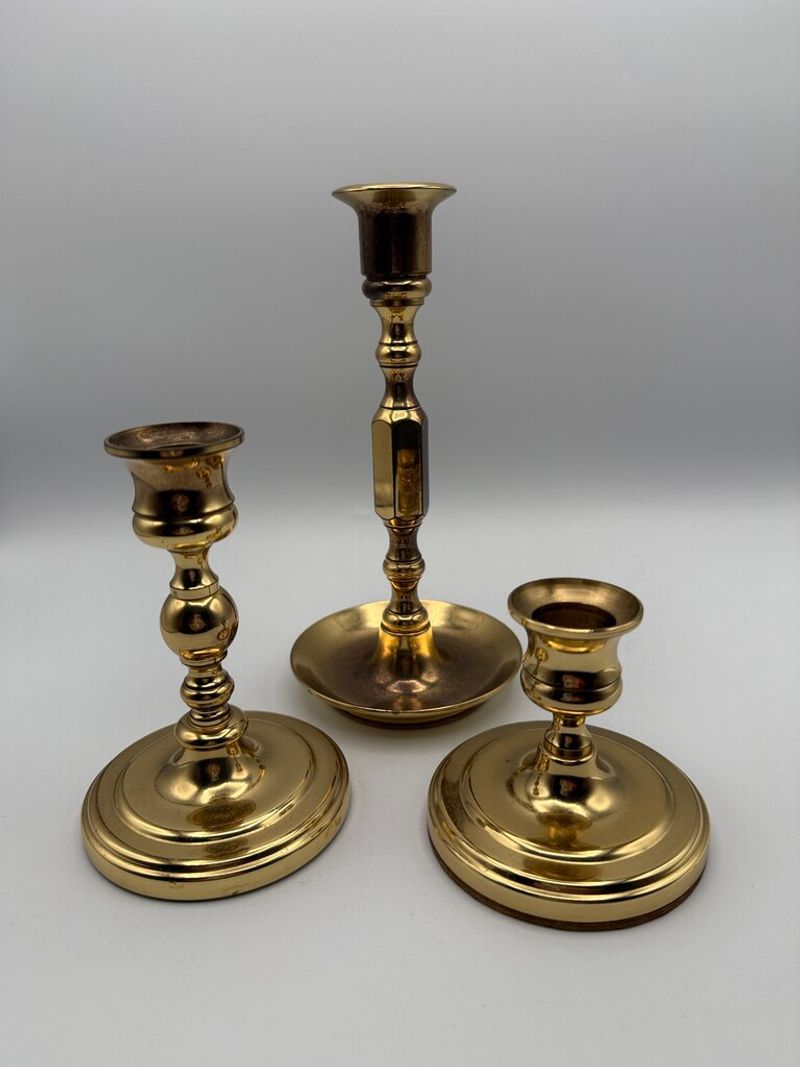
Those gleaming brass candleholder sets that once adorned Michigan dining tables and mantels have tarnished in market value. The matching sets of graduated heights or identical designs that were wedding registry staples throughout the 1980s and 90s now linger unwanted in thrift stores across the state.
Michigan designers point to changing entertaining styles and fire safety concerns as major factors in their decline. Modern homeowners prefer flameless alternatives or more casual, eclectic groupings of candleholders in mixed materials. The formal, matched aesthetic these sets represent feels increasingly disconnected from contemporary Michigan lifestyles.
If you’ve inherited these brass beauties, consider separating them rather than selling as a set. Individual pieces sometimes find new homes as part of gallery displays or eclectic tablescapes, while complete matching sets continue gathering dust on resale shelves throughout the Mitten State.
10. Faux Bois Furniture Barking Up Wrong Tree

Those faux bois (fake wood) furniture pieces mimicking tree branches and rustic elements have fallen from favor with Michigan collectors and decorators. Once considered charming garden accents or conversation pieces, these concrete or resin imitations of natural wood now register as kitschy and artificial.
Michigan designers note that as authentic materials become more valued, these imitations appear increasingly unconvincing to sophisticated buyers. Environmental awareness has also shifted preferences toward either genuine sustainable wood or honest modern materials rather than imitations. The heavy, immobile nature of many faux bois pieces further limits their appeal in today’s flexible living spaces.
Already have faux bois pieces in your collection? Consider relegating them to garden spaces where weathering will actually improve their appearance and authenticity. Indoor examples continue declining in value across Michigan’s secondary furniture market regardless of condition or age.
11. Faux-Beige Sectional Sofas Sinking Fast
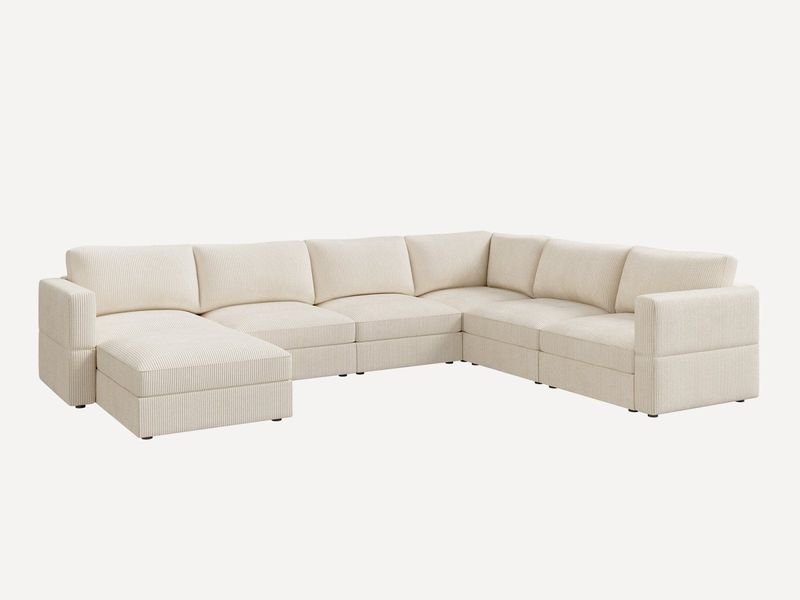
Those enormous faux-beige sectional sofas that dominated Michigan living rooms through the early 2000s have crashed in resale value. Often covered in microfiber or synthetic suede in various shades of beige, tan, and taupe, these massive seating arrangements now symbolize dated suburban design to younger buyers.
Michigan designers report clients specifically requesting these pieces be removed before home showings. Their bulky proportions fight against current preferences for more modular, movable furniture that adapts to changing needs. The neutral-at-all-costs color palette also fails to excite in an era where personality and individuality in home decor take precedence.
If you’re stuck with one of these behemoths, consider selling individual sections separately or investing in slipcovers before attempting resale. The massive scale that once signaled luxury now reads as inflexible and overwhelming in most Michigan homes.
12. Resin Garden Stools Crumbling in Popularity
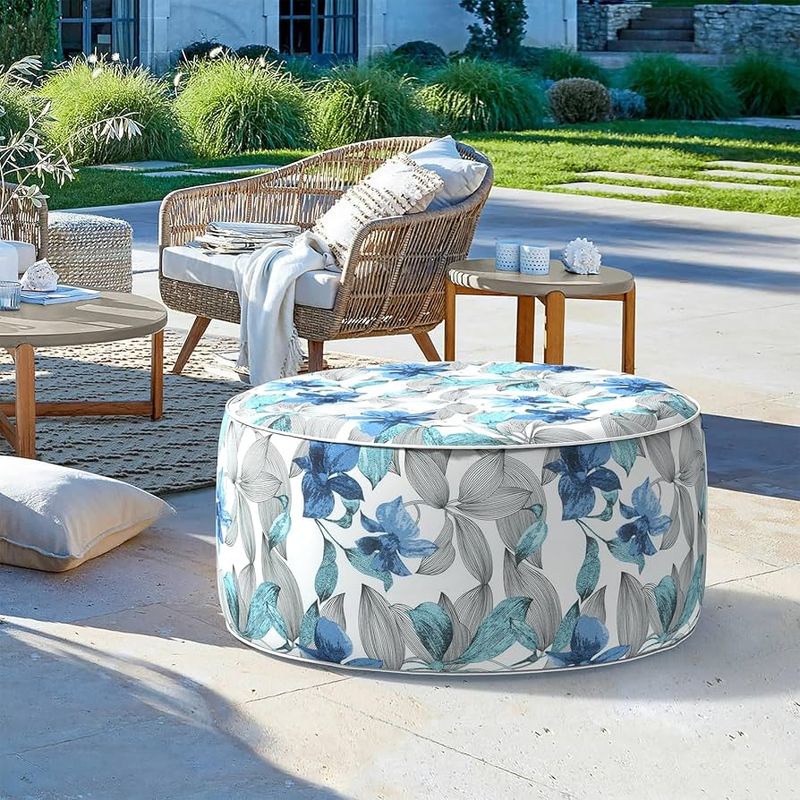
Those colorful resin garden stools that briefly dominated Michigan patios and sunrooms have quickly lost their appeal among collectors and designers. Often made to mimic ceramic or stone at a fraction of the cost, these lightweight accessories haven’t aged well in the marketplace or physically.
Michigan designers point to fading colors, cracking surfaces, and dated patterns as major factors in their decline. The material’s association with cheap mass production has permanently tainted its appeal among collectors seeking quality and sustainability. Even vintage examples from better manufacturers struggle to command interest at Michigan estate sales and auctions.
Already own these outdoor accessories? Consider them consumable decorative items rather than investments or collectibles. Their practical function as extra seating or plant stands remains useful even as their resale value continues to deteriorate across Michigan’s secondary home furnishings market.
13. Vinyl Lampshades Dimming in Value
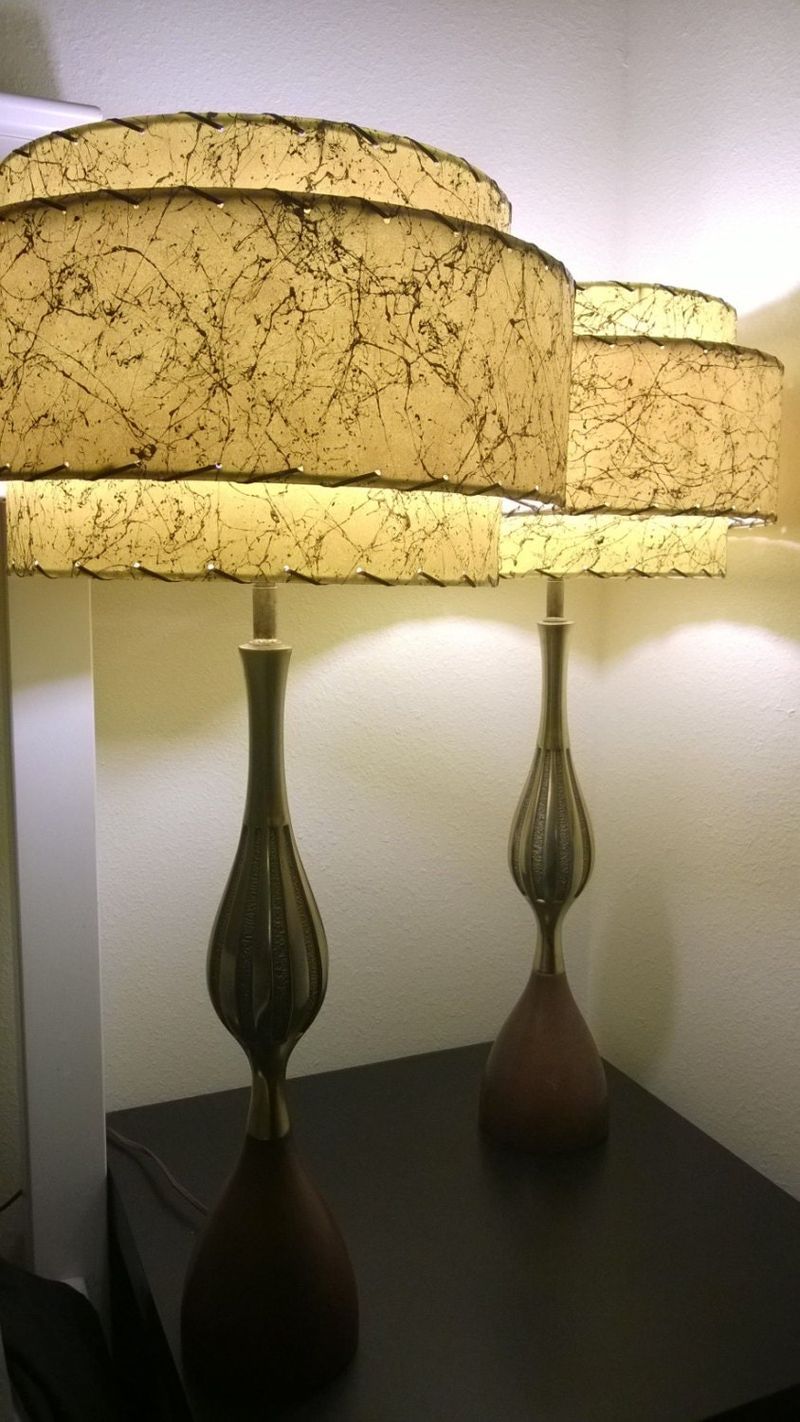
Those vinyl lampshades that adorned countless Michigan homes from the 1960s through the 1990s have become virtually worthless in today’s marketplace. Often featuring pleated, textured, or printed designs, these synthetic coverings haven’t stood the test of time either physically or aesthetically.
Michigan designers consistently mention these as immediate replacement items when refreshing older homes. The material tends to yellow, crack, and become brittle with age and exposure to heat from lightbulbs. The unmistakable “hot plastic” smell when illuminated further diminishes their appeal to contemporary buyers focused on natural materials and sustainability.
If you’ve inherited lamps with vinyl shades, consider replacing just the shades before attempting to sell the bases. A simple fabric or paper shade can transform a dated lamp into something with contemporary appeal, while the original vinyl coverings continue to diminish in value regardless of condition or provenance.
14. Cheap Wicker Chests Unraveling Quickly
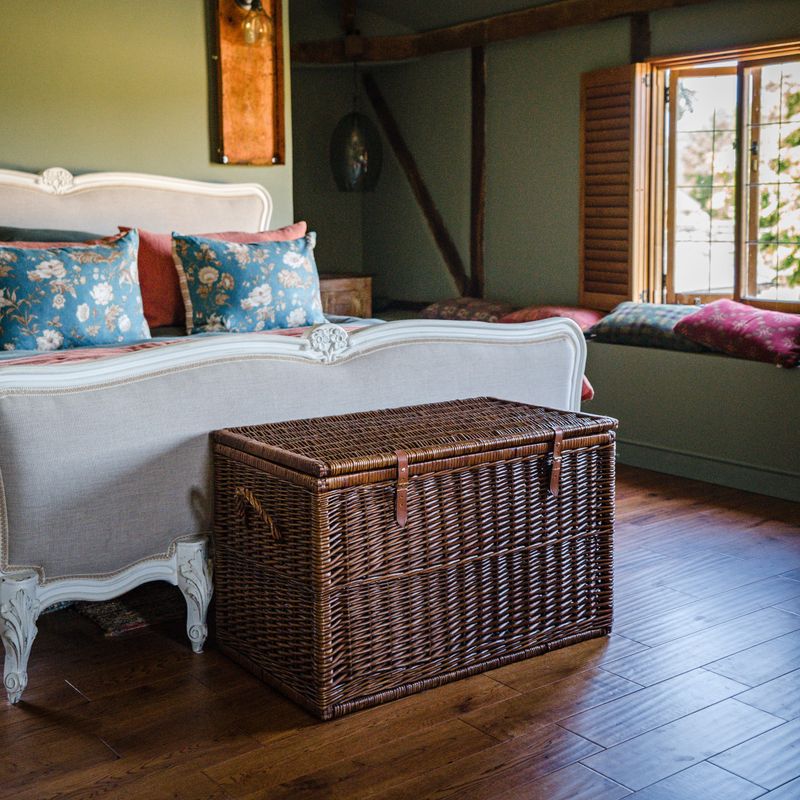
Those inexpensive wicker chests and trunks that once served as coffee tables and storage in Michigan homes have become nearly impossible to resell. Often made from paper-wrapped wire rather than genuine rattan, these lightweight pieces typically haven’t aged gracefully.
Michigan designers note that even well-preserved examples struggle to find buyers in today’s market. The flimsy construction and purely decorative nature conflict with contemporary preferences for solid, functional furniture with authentic materials. Their association with dorm room and first-apartment decor further limits their appeal to serious collectors or homeowners.
If you’ve held onto these pieces, consider their practical storage value rather than investment potential. Their lightweight nature makes them useful for seasonal storage even as their decorative appeal has waned significantly across Michigan’s resale market. Quality handwoven pieces retain some value, but mass-produced versions continue their market decline.
15. Mass-Produced Wall Sculptures Falling Flat
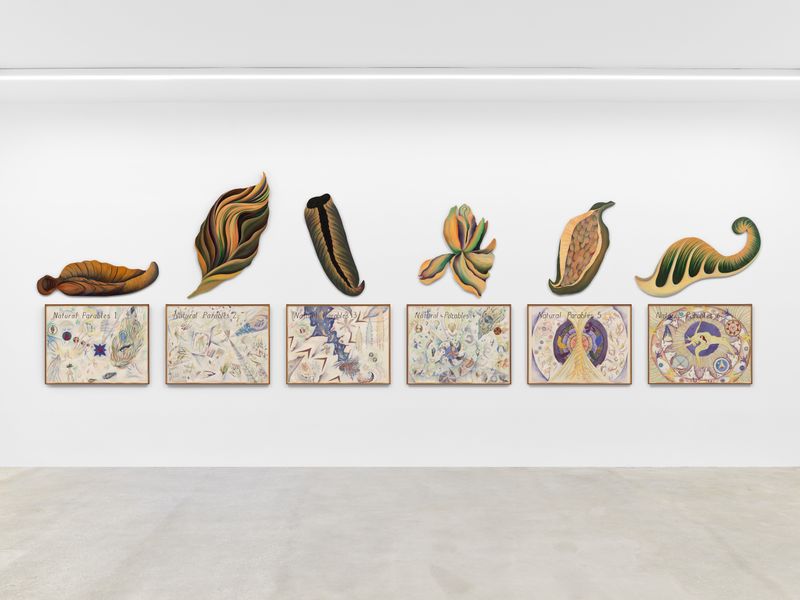
Those mass-produced metal and wood wall sculptures that adorned countless Michigan homes through the 1980s and 90s have plummeted in collector interest. Often featuring abstract designs, sailing ships, or stylized nature scenes, these corporate-looking pieces now signal dated decor to younger buyers.
Michigan designers report these items frequently appear in estate sales with no takers regardless of size or subject matter. The generic, hotel-art quality conflicts with today’s emphasis on personal meaning and authentic artistic expression in home decor. Their association with corporate environments further diminishes their appeal in residential settings.
Already own these wall fillers? Consider donating rather than attempting resale, as even consignment shops increasingly decline these pieces. The rare exception might be signed, limited-edition works with documented provenance, but standard mass-market examples continue losing whatever modest value they once held throughout Michigan’s secondary art market.
16. Overstuffed Floral Ottomans Wilting Fast
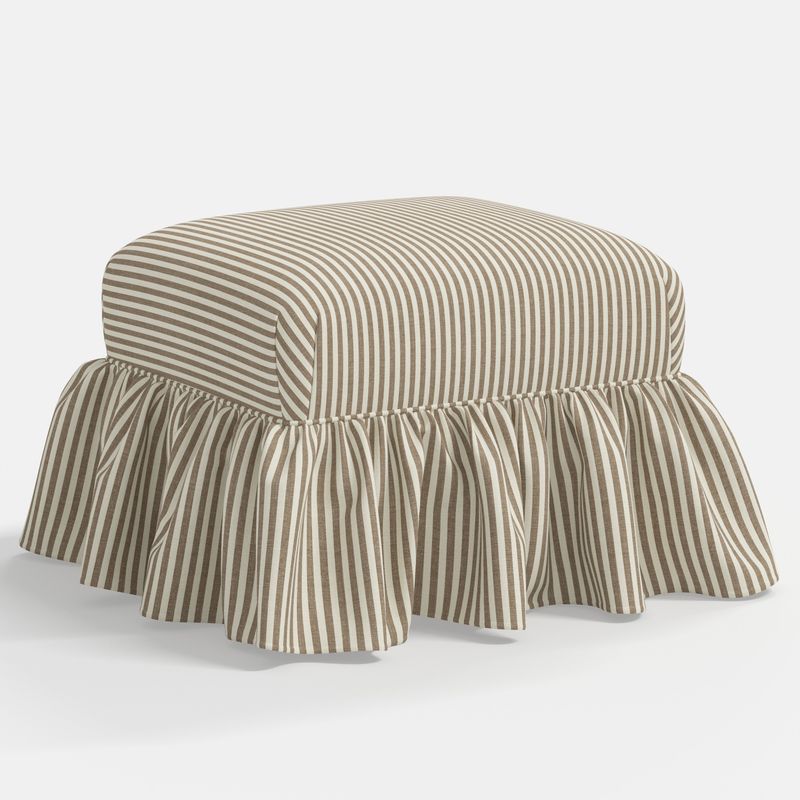
Those plump, floral-patterned ottomans that once complemented matching sofas in Michigan homes have withered in market value. Typically featuring cabbage roses or country-inspired patterns on heavily padded forms, these pieces now symbolize outdated decorating approaches to younger buyers.
Michigan designers report these items consistently appear in thrift stores and donation centers with minimal resale potential. The formal matching aesthetic they represent conflicts with contemporary preferences for more eclectic, personalized spaces. Their specialized function as purely decorative footrests further limits appeal in today’s multifunctional furniture marketplace.
If you’ve inherited one of these floral poufs, consider recovering it in a solid contemporary fabric before attempting resale. The underlying structure often remains sound even as the dated upholstery continues to diminish its market value across Michigan’s secondary furniture market.
17. Chipped China Lamp Bases Completely Worthless
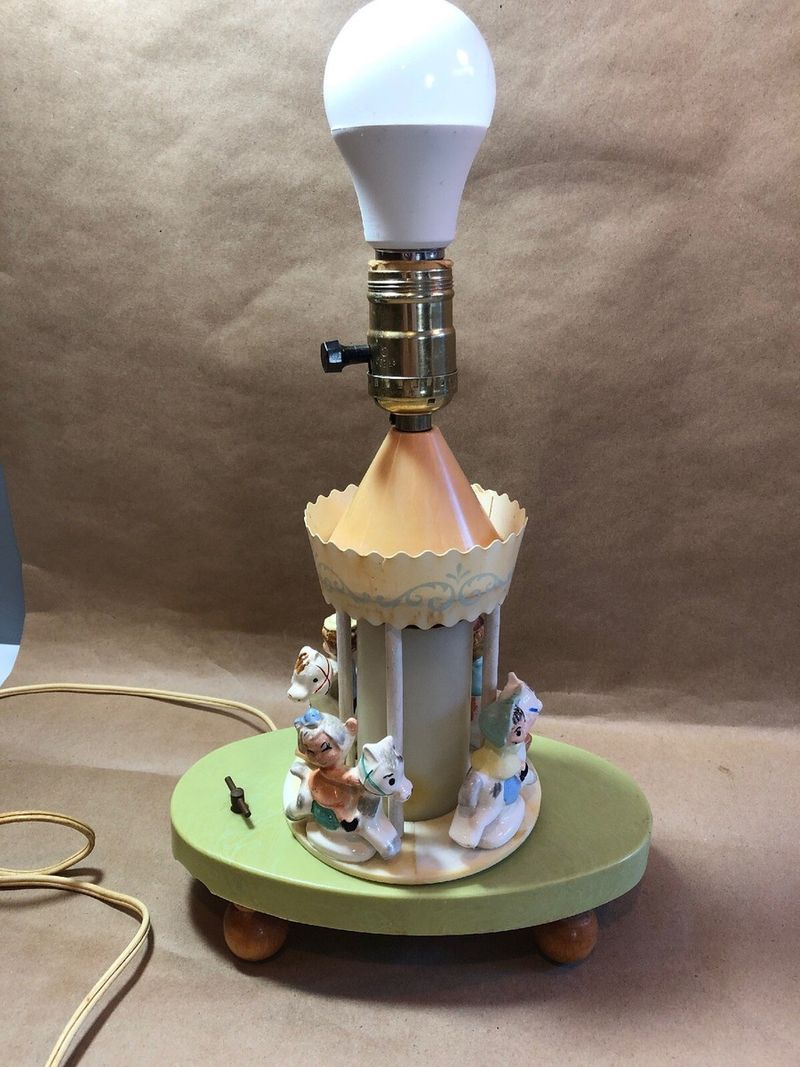
Those once-precious china lamp bases with any damage have become completely unsellable in Michigan’s secondary market. Even small chips or hairline cracks render these pieces virtually worthless to collectors and decorators alike.
Michigan designers unanimously report damaged ceramic lamps as immediate rejection items at consignment shops and estate sales. Safety concerns about electrical components in cracked bases compound aesthetic objections to visible damage. The labor cost of rewiring and restoring often exceeds any potential resale value, creating a perfect storm of market rejection.
Already own damaged china lamps? Consider them candidates for creative repurposing rather than resale. Small examples might become candle holders after removing electrical components, while larger pieces could transform into vases or decorative objects. Just don’t expect these damaged goods to command any meaningful price in Michigan’s increasingly selective collectibles market.
18. Torn Tapestry Wall Hangings Completely Rejected
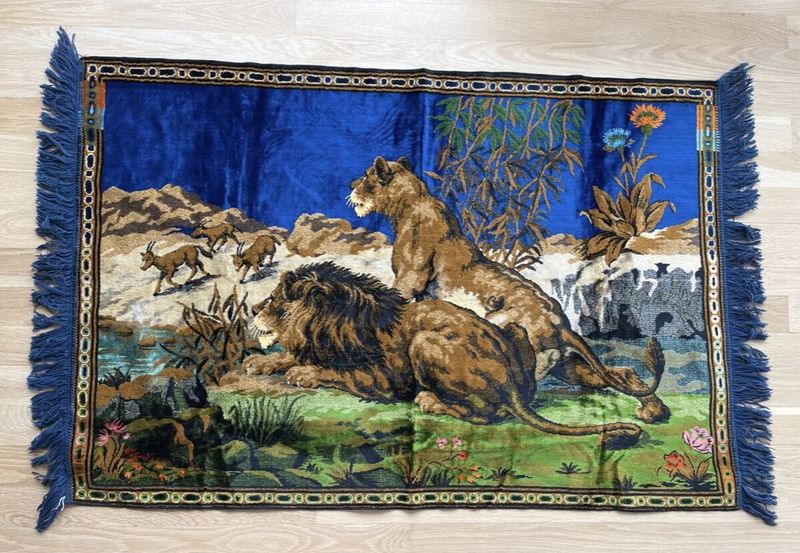
Those elaborate tapestry wall hangings showing any tears or significant damage have zero market value according to Michigan’s design community. Once considered family heirlooms worthy of preservation, damaged textiles now face complete rejection in the resale marketplace.
Michigan designers note that even minor damage renders these pieces unsellable regardless of age, subject matter, or original quality. The restoration costs typically exceed replacement value, while the heavy, formal aesthetic further limits appeal to younger buyers. Their association with dusty, allergen-trapping textiles compounds their market challenges.
If you’ve inherited damaged tapestries with sentimental value, consider preserving small sections in shadow boxes rather than attempting to sell the damaged whole. Alternatively, some crafters repurpose salvageable sections into pillows or bags, though damaged pieces will never recoup their original value in Michigan’s increasingly selective decorative arts market.
19. Broken Folding Room Dividers Completely Unmarketable
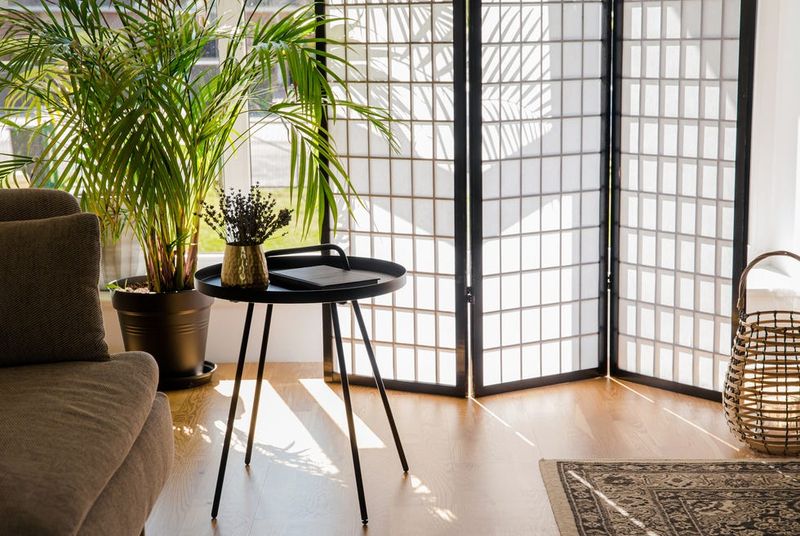
Those multi-panel folding screens and room dividers with any structural damage have become impossible to sell in Michigan’s secondary furniture market. Even minor issues with hinges, torn panels, or stability render these pieces completely worthless to collectors and decorators.
Michigan designers report damaged screens as immediate rejection items at consignment shops, regardless of their decorative elements or historical interest. The repair costs typically exceed any potential resale value, while their specialized function further limits appeal. Their bulky storage requirements compound their marketability challenges in today’s space-conscious homes.
Already have a damaged divider? Consider salvaging individual panels as wall art or headboards rather than attempting to sell the compromised whole. Complete, undamaged examples still hold modest value, but any structural issues create an insurmountable barrier to resale throughout Michigan’s secondary furniture marketplace.
20. Water-Stained End Tables Completely Devalued
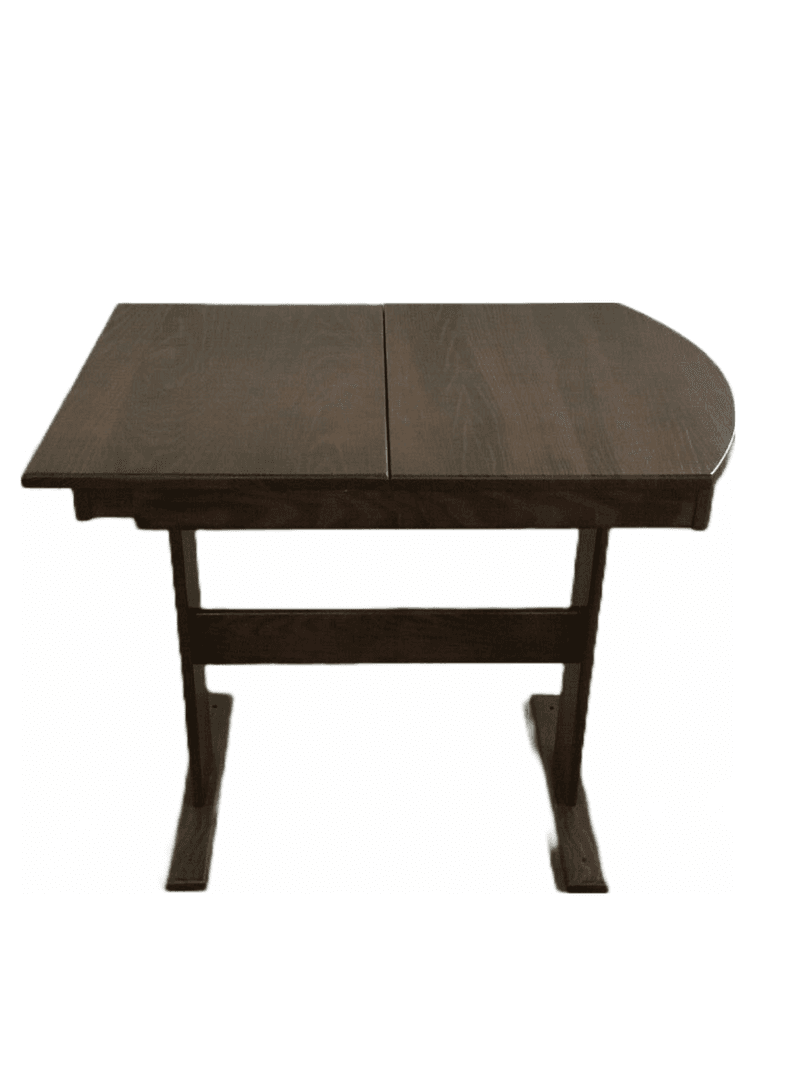
Those wooden end tables bearing water rings, stains, or moisture damage have absolutely no market value according to Michigan’s design community. Even minor water marks render these pieces unsellable regardless of their maker, wood type, or original quality.
Michigan designers unanimously report water-damaged tables as immediate rejection items at consignment shops and estate sales. The refinishing costs typically exceed replacement value for all but the most exceptional pieces. The visible reminder of poor care creates an immediate negative impression that overwhelms any positive design attributes.
If you own water-damaged tables with good structural integrity, consider refinishing them yourself or using tablecloths before attempting resale. Alternatively, some crafters repurpose salvageable bases with new tops, though damaged pieces will never recoup their original value in Michigan’s increasingly selective furniture market.
21. Bent Metal Plant Stands Completely Unwanted
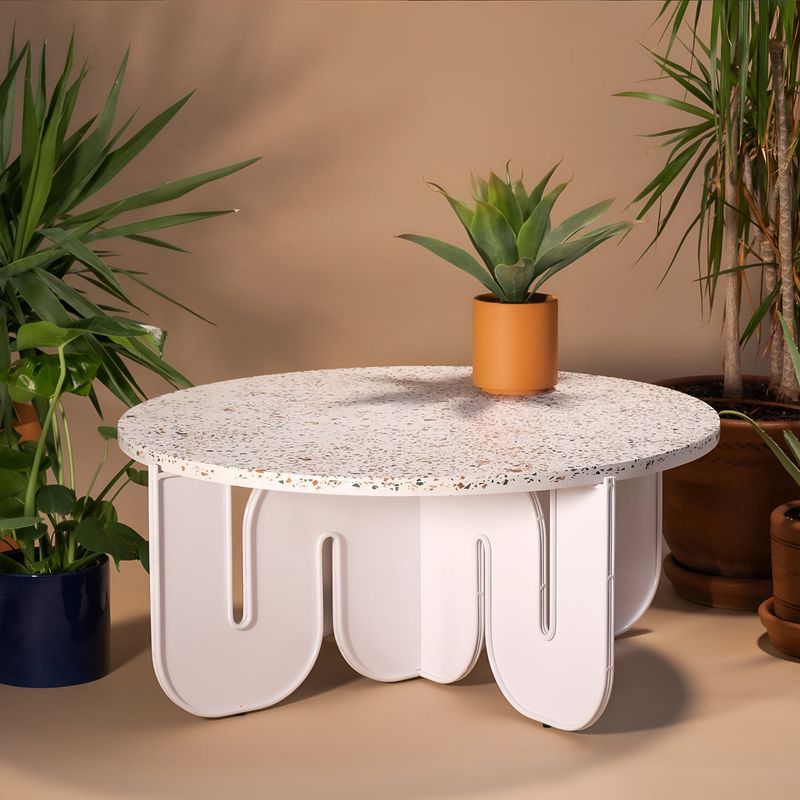
Those multi-tiered metal plant stands showing any bending or structural damage have absolutely no resale value in Michigan’s secondary market. Once practical displays for houseplant collections, damaged examples face universal rejection from buyers and consignment shops alike.
Michigan designers note that even minor bends or wobbles render these pieces completely worthless regardless of their original quality or design. Safety concerns about potential collapse compound aesthetic objections to visible damage. The specialized function further limits appeal to all but dedicated plant enthusiasts.
Already own a bent plant stand? Consider it a candidate for scrap metal rather than resale. The repair costs typically exceed any potential market value, creating an insurmountable barrier to resale. Even professionally straightened examples carry the stigma of previous damage, permanently diminishing their appeal throughout Michigan’s increasingly selective home accessories market.

